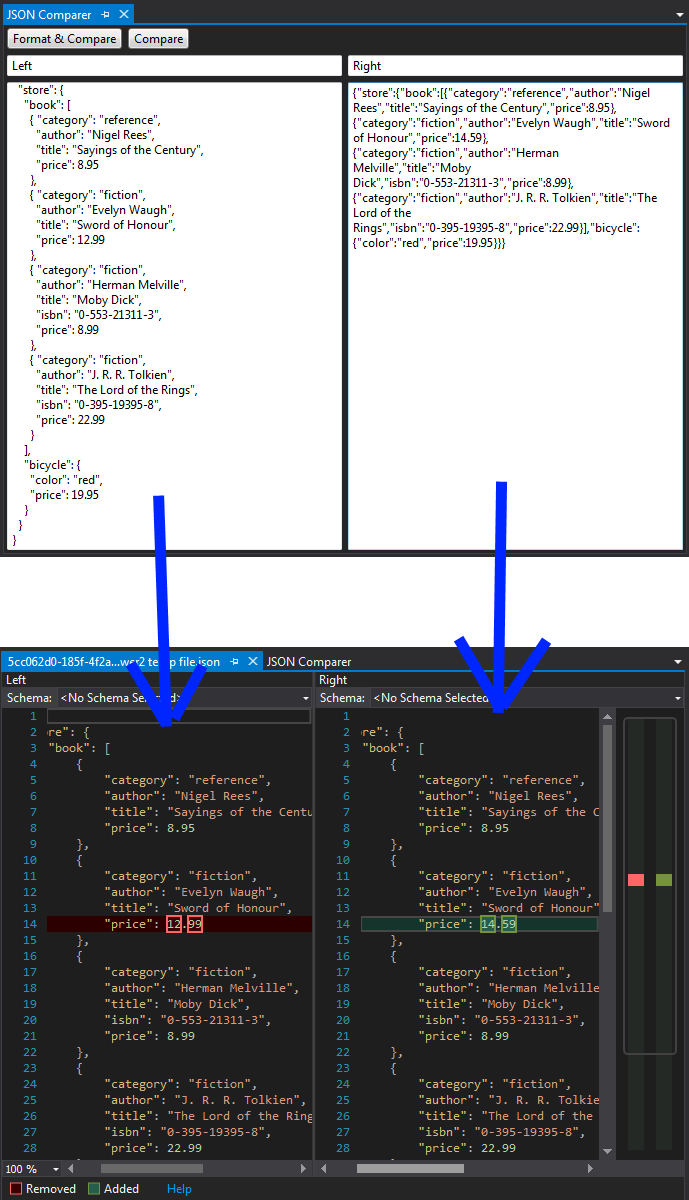


Since you can expect your schema to evolve over time, you should probably also include the version keyword. These are all defined using the keywords id, $schema and title, all of which are provided in the draft JSON Schema. At the top of the file, you can specify the schema's id, the schema that should be used to validate the format of your schema, and a descriptive title. To begin creating a schema, add a JSON or JSON Schema file to your project. The standard practice with XML namespaces was to incorporate your organization's namespace into the URI (because who in their right mind would use some other organization's URL in their identifiers) which sounds like a good place to begin for designing your JSON URIs. Schemas are identified by names that are URIs (similar to XML namespaces).Īs you develop JSON Schemas you'll want to establish a naming convention for your schemas to ensure that two schemas don't ever have the same name. In JSON Schema, a schema describes the formats of instances (actual JSON documents). json files like appsettings.json than you did in earlier versions of Visual Studio). Visual Studio, for example, has provided support for JSON Schema since Visual Studio 2013 (that's the reason you've been getting more editing support when modifying. This hasn't stopped several vendors from creating validation tools based on the draft. While the goal is for JSON Schema to be an IETF standard, JSON Schema is still in draft format (the latest draft as of this writing - draft-07(01) - was published in January 2018). You can follow the progress of the specification at. For example, a JSON Schema is itself written in valid JSON The format of a valid JSON Schema is specified by another JSON schema. JSON Schema borrows some ideas from XSD, the XML format for defining XML messages. This has, in turn, fostered the creation of automated tools for validating specific messages against the specification.

JSON Schema attempts to address this issue by providing, among other goals, a mechanism to specify the format of JSON messages in a way that's both human and machine readable. Developers building consumers have to fall back on their own judgement and submitting sample messages to the Web Service to see if they get rejected. Those tools are "human readable" but not "machine readable." As a result, they can't be used to automate the process of validating messages. Without some technology to define messages, the specifications for those messages have to be communicated using examples and (pardon my language) documentation. Say what you want about the complexity of the original technologies for Web Services (WSDL and SOAP), but they did give you the ability to define the structure of the request and response messages for a Web Service's operations.


 0 kommentar(er)
0 kommentar(er)
